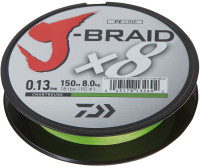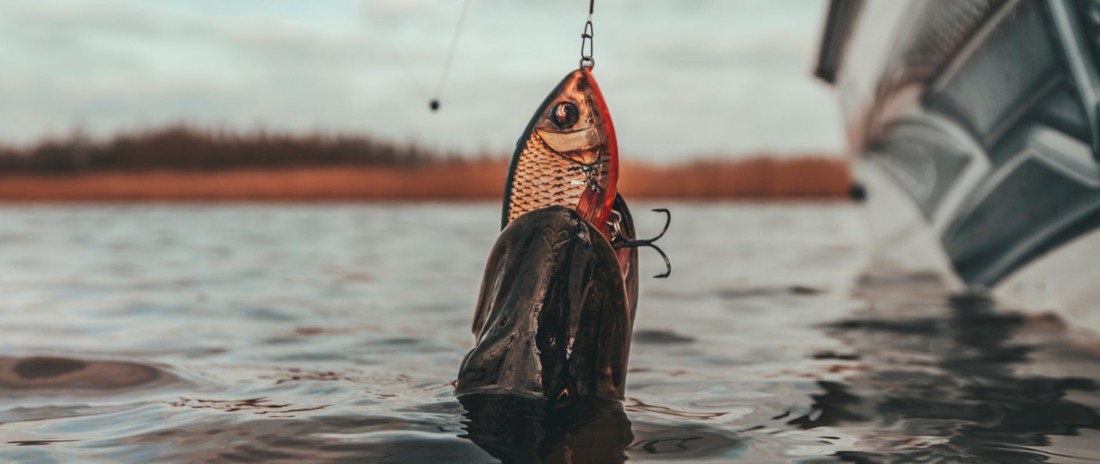
The start of pike season is THE highlight of the year for many pike enthusiasts. After the demanding spawning season, pike are hungry and can be found in the shallower areas of bodies of water, where they search for a substantial meal. To catch the larger pike, using big baits, or fishing with particularly large lures, can be an effective method. In the following, we have compiled some tips and tricks for big bait fishing for pike to help ensure a successful start to the season.
However, it is important to note that big bait fishing is not a cure-all and, like other methods, is not a guarantee of catching fish. Additionally, throwing lures weighing over 100 grams all day can be physically demanding and it is possible to go for long periods of time without getting a bite. However, all the effort, hard work, and invested time are forgotten in the moment when the first large pike inhales the lure with the force of a cannonball. It is a feeling and an adrenaline rush with maximum addictive potential.
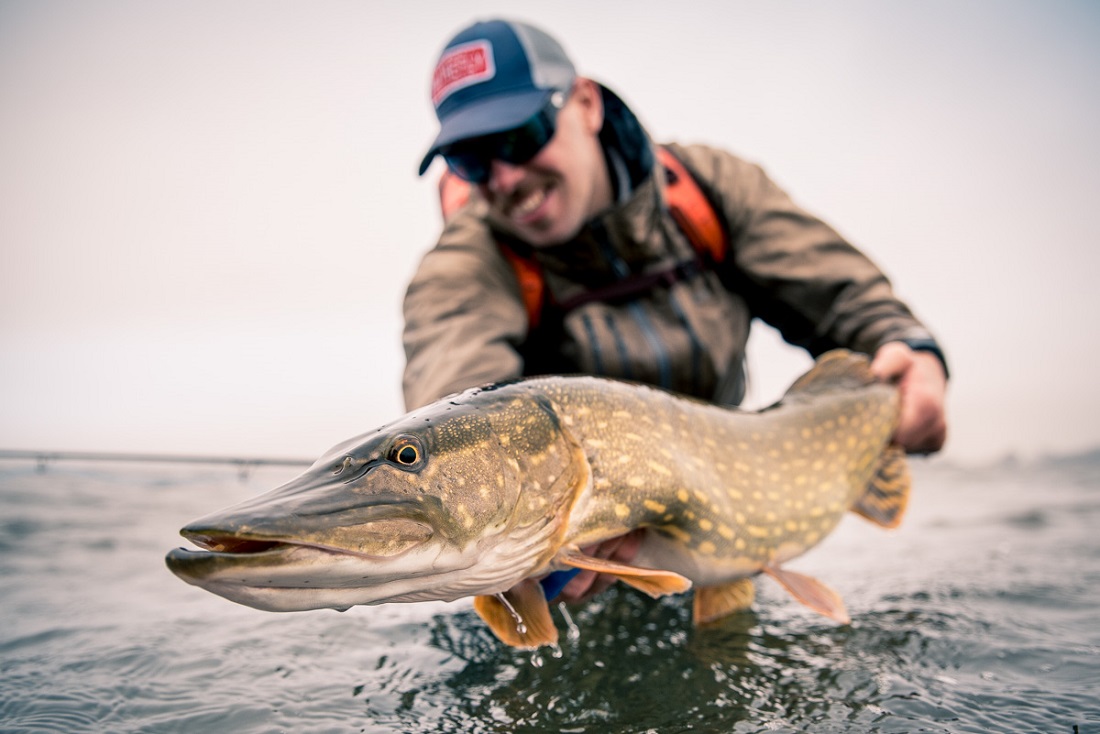
Wade fishing with bigbaits is a great way to catch big pike, especially in spring.
The right equipment
To increase the chances of catching fish, there are several things to consider when it comes to the equipment, lure and spot selection at the water. First and foremost, it's important to have the right rod, reel, and line.
Typical pike rods are usually classic spinning rods for conventional reels with casting weights around 100 g. These are perfectly adequate for all "normal" pike lures, and even many swimbaits and jerkbaits up to 20 cm can be cast quite well with them. However, for swimbaits and softbaits beyond 25 cm, a multi-reel (or baitcasting-reel) on a sturdy baitcasting rod with more than 200 g casting weight is recommended. For example, the Westin W10 Monsterstick-T baitcasting rod combined with a 13 Fishing Concept A3 LH baitcasting reel allows for easy casting of large lures such as the 25 cm Linethru Trout from Savage Gear.
There is no need to be afraid of using a baitcasting reel when big bait fishing. Once adjusted, most baits can be cast easily without major readjustments, almost like with a conventional reel. To start, set four of the six pins and adjust the brake so that the spool does not overturn when the bait is dropped freely. With more experience, you can then remove pins and adjust the brake so that the bait can spool the line from the reel evenly when sinking in the water.
The line can be relatively strong as long as it is not too smooth and braided relatively round. The line has to withstand a lot of casts and has little influence on the casting distance given the size of the lure and reel settings. An eight-strand braided line with an approximate diameter of 0.35 mm and a breaking strength of around 35 kg is suitable, but a four-strand braided line is also a good choice for beginners. Lastly, you need a pike-proof leader, and the material is mostly already together. Of course, you can simply take a steel leader with the appropriate load capacity, but these are usually very thick and therefore quite noticeable underwater. A thick fluorocarbon or hard mono leader with a diameter of around 0.90 mm is usually less off-putting to large and experienced pike. Simply connect a 1-1.5 m long piece of it with an FG knot directly to the braided main line. Finally, attach a sturdy, thick-wired, and large snap and your big bait combo is ready. It is a good idea to hang a fresh leader with a weight at the end overnight to smooth it out.
In addition to the right rod combo, it's always a good idea to have a sufficiently large landing net with you when big bait fishing to land the fish safely. It's also a good idea to have a landing glove and a long release-plier with you so that you can avoid the sharp pike teeth and keep your fingers safe. For the fish, especially large pike, it's always better to carry a landing mat or at least a wide measuring tape to lay the fish on.
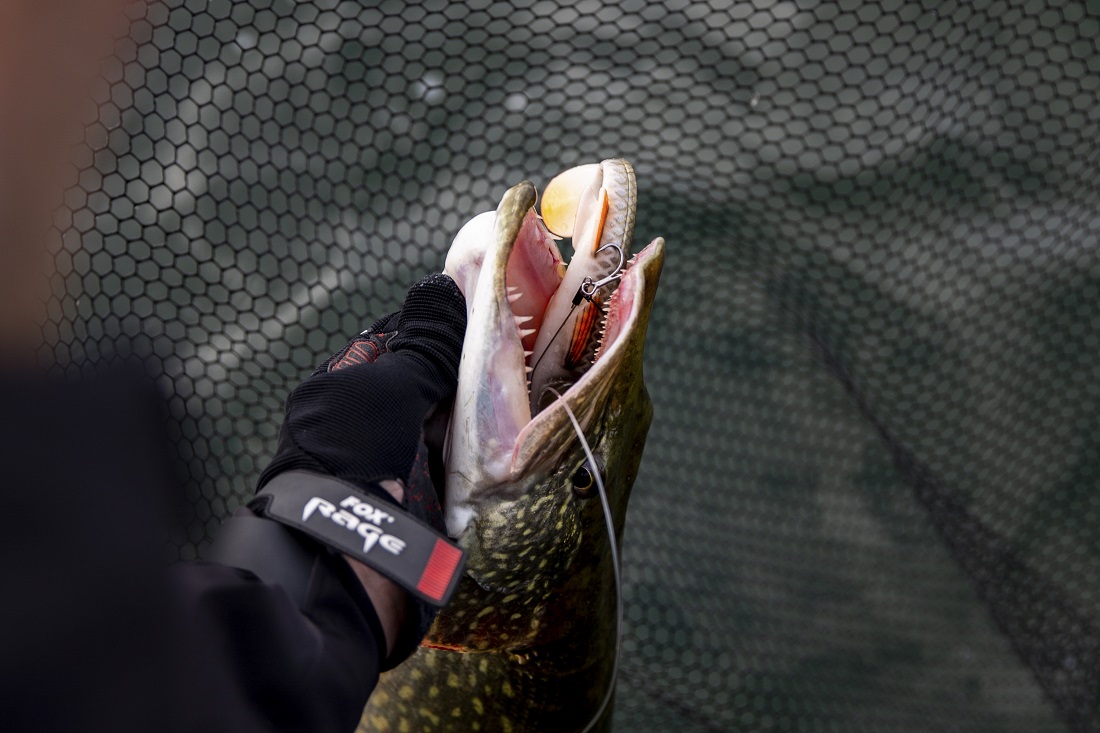
The pike's mouth offers a lot of space for large lures, and even small pike are not afraid of a decent bite.
Lure selection and retrieving style
When choosing lures for big bait fishing, as the name suggests, particularly large lures such as swimbaits and long softbaits are recommended. Large swimbaits like Savage Gear's Line Thru lures have a deceptively realistic swimming behavior and are almost indistinguishable from a real fish. They also appeal to particularly cautious fish, and thanks to the clever Line Thru design, the pike cannot use the lure's weight to shake itself free during the fight. The approximate running depth is usually given for swimbaits and can be influenced by the retrieval speed and the distance of the rod tip from the water. Large softbaits like the Westin ShadTeez Slim in 27 cm or Westin BullTeez Shadtail in 24 cm are typically offered with so-called shallow-rig hook systems. These are securely attached to the lure head with a screw, such as with the Westin Add-It Shallow Rig, and the hooks are attached with spikes in the belly. Such softbaits typically have a powerful, flanking action, creating an irresistible appeal to many pike.
In addition to the methods mentioned above, the running depth can also be changed by attaching weights to the lure head, using screws with integrated weights, or screwing weights into the belly. The latter also have the advantage of significantly stabilizing the swimming behavior of many large rubber fish.
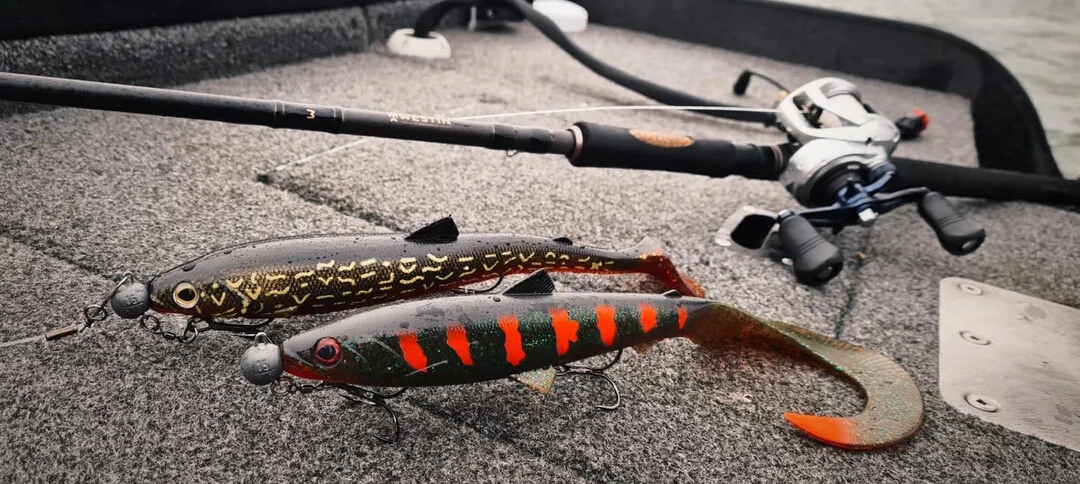
Large softbaits on the shallow-rig work particularly well for big pike in the spring and can be perfectly adapted to the prevailing conditions by using different weights.
When fishing, a steady retrieval is usually the best way to catch fish. Large pike are often very cautious and can quickly become suspicious if the lure looks too unnatural. It is important to pay particular attention to the running depth and retrieval speed when fishing. Generally, it is better to fish a little too shallow or too high in the water column than too deep. A big pike will come several meters towards the lure if it wants to eat it. The other important point is the retrieval speed. In contrast to standard pike fishing, where the lure is often presented very quickly to generate reaction bites, a slow lure retrieval is often the key to success when big bait fishing. This gives the fish enough time to approach the lure, follow it, and finally strike. Pauses in the retrieval style can also be very effective in enticing the pike to bite.
The Right Choice of Spot
At the beginning of the pike season in early May, even the big pikes can often be found in shallow waters. The bait fish move into shallow water zones because the water is slightly warmer there. They stay there to feed and spawn, and the pikes know that too. Often, after a successful spawning period, the pikes move into open water or slightly deeper water. Shallow water zones that are located at steeply sloping edges or have some deeper areas nearby are particularly good for such situations. It is also worth investing more time in such spots and making many casts in roughly the same area. Even if there is currently no pike there, one can come by at any time and will naturally want to make a catch. If the shallow areas are fished out or not available, it is always a solid option to move around and cast. Running and casting is then the motto.
Another tactic when big bait fishing is to target structures. Pikes often stay near underwater obstacles such as weed banks, rocks, or tree stumps. It is worth to precisely present your lure and trying out different ones. Fishing at different depths can also be promising.
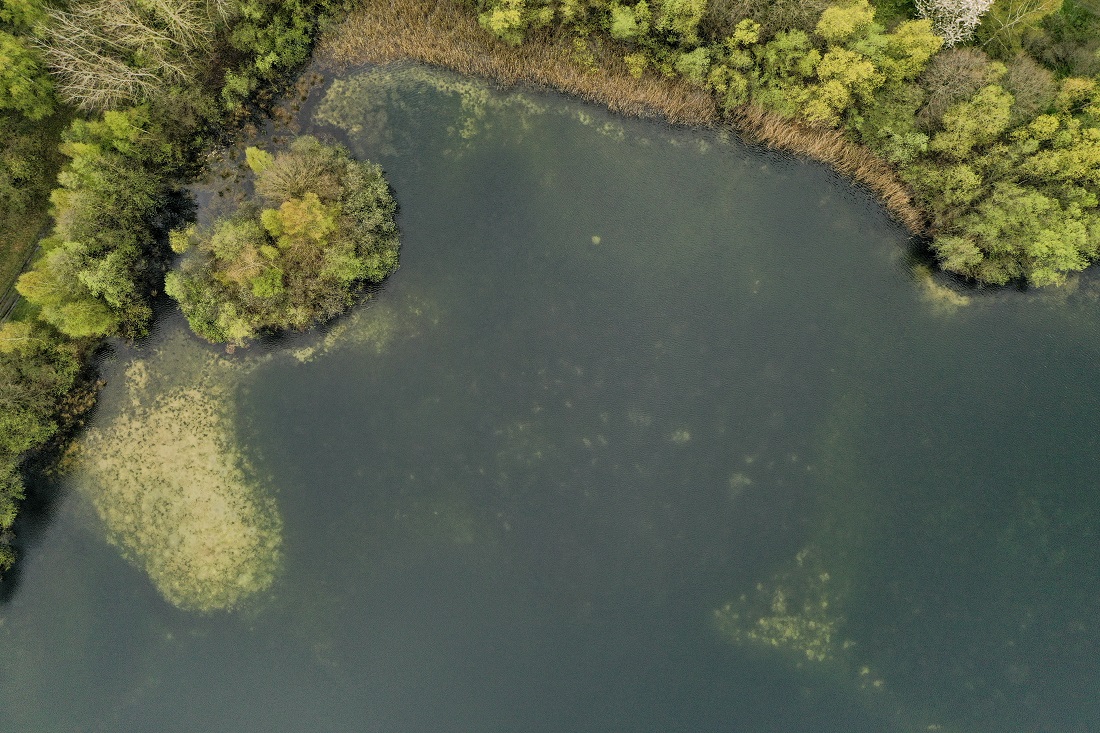
Shallow bays are an absolute hotspot in the spring. When there is a lot of structure in a small space, like here, the pike are not far away.
In summary, bigbaiting is an effective method to start the season, but can also be practiced with success throughout the year. It is a demanding and sometimes exhausting fishing method, but it can always bring the fish of a lifetime! In our store you will find a wide range of products suitable for this fishing. If you have any questions, you can always contact our customer service. We are happy to help you and hope that this guide has helped you.
Have fun on the water and good luck with big lures for big pike!

 adh-world
adh-world